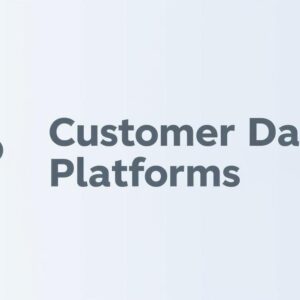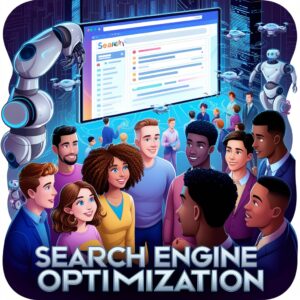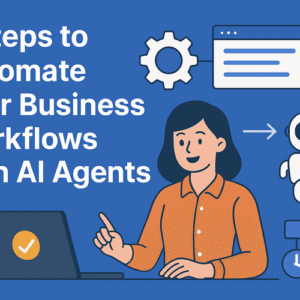In today’s B2B environment, buyers expect seamless experiences that address their needs at every stage of the buying process. Customer Journey Mapping enables organizations to visualize these interactions, identify challenges, and optimize touchpoints. By understanding how prospects move through the journey, marketers can deliver relevant content, nurture leads effectively, and accelerate conversions, ultimately driving higher revenue growth.
Developing Comprehensive Buyer Personas
The first step in customer journey mapping is creating detailed buyer personas. B2B purchases often involve multiple stakeholders, including executives, technical experts, and procurement managers. Each persona has unique pain points, goals, and communication preferences. By documenting these insights, marketers can craft personalized messaging and content strategies that resonate with each stakeholder, improving engagement and increasing the likelihood of converting prospects into customers.
Mapping the Buyer Journey Stages
A typical B2B buyer journey consists of awareness, consideration, decision, and post-purchase engagement. During the awareness stage, prospects identify a challenge and seek potential solutions. In the consideration stage, they evaluate options and compare vendors. The decision stage involves selecting the best-fit provider, while post-purchase focuses on onboarding, customer satisfaction, and retention. Mapping these stages allows marketers and sales teams to design campaigns and content that support buyers at every step of the journey.
Collecting and Analyzing Data
Data collection is critical to accurate customer journey mapping. Quantitative data such as website analytics, CRM activity, and email performance provides measurable insights into prospect behavior. Qualitative data, including surveys, interviews, and customer feedback, adds context to understand motivations, challenges, and expectations. Combining both types of data ensures journey maps reflect real-world buyer behavior, enabling marketers to design effective strategies that drive engagement and conversion.
Visualizing the Customer Journey
Visualization makes complex customer journeys easier to understand and act upon. Effective journey maps highlight touchpoints, channels, emotions, and potential obstacles that prospects may encounter. Tools such as flowcharts, diagrams, and timelines allow marketing and sales teams to quickly identify gaps, streamline processes, and optimize the experience. Visual mapping fosters better collaboration and ensures a consistent, frictionless experience for prospects throughout the journey.
Aligning Content With Buyer Stages
Content alignment is essential for B2B demand generation. During the awareness stage, blogs, whitepapers, webinars, and guides introduce your brand and establish thought leadership. In the consideration stage, case studies, product demos, and comparison guides help prospects evaluate solutions. At the decision stage, personalized proposals, ROI calculators, and consultations provide clarity and address objections. Aligning content with buyer stages ensures relevance, builds trust, and accelerates conversion from leads to customers.
Leveraging Marketing Automation and CRM
Marketing automation and CRM platforms are indispensable for executing customer journey strategies. Automated workflows nurture leads according to their engagement behavior and stage in the journey. CRM systems provide a unified view of interactions across channels, enabling marketing and sales teams to coordinate effectively. These tools improve efficiency, maintain consistency, and provide actionable insights that allow marketers to optimize campaigns in real time for better engagement and conversions.
Sales and Marketing Collaboration
B2B demand generation is most effective when sales and marketing teams work together. Sales teams have insights into buyer objections, questions, and priorities that can inform content and campaigns. Shared dashboards, regular meetings, and aligned KPIs ensure both teams work toward common objectives. Collaboration enhances lead quality, accelerates the sales pipeline, and delivers a seamless and consistent buyer experience across all touchpoints.
Personalization for Enhanced Engagement
Personalization is a critical driver of engagement and conversion. By tailoring messages based on industry, company size, role, and previous interactions, organizations can provide relevant experiences at every stage of the journey. Account-based marketing, dynamic content, and personalized emails work alongside customer journey mapping to strengthen relationships, improve engagement, and foster trust with prospects, increasing the likelihood of conversion.
Post-Purchase Engagement and Retention
Customer journey mapping should extend beyond acquisition to post-purchase engagement. Onboarding, support, follow-ups, and training initiatives are essential for maintaining satisfaction and loyalty. Mapping these touchpoints allows businesses to identify opportunities for upselling, cross-selling, and advocacy. Engaged and satisfied customers contribute to long-term revenue growth and become brand advocates, promoting your business within their networks.
Continuous Testing and Optimization
Customer journey mapping is not static and requires ongoing testing and optimization. A/B testing landing pages, emails, content offers, and messaging helps marketers determine what resonates best with their audience. Tracking KPIs such as engagement, lead-to-opportunity conversion, and pipeline velocity provides actionable insights for continuous improvement. Iterative optimization ensures that B2B demand generation strategies remain effective and aligned with changing buyer behaviors.
Strategic Benefits of Customer Journey Mapping
Integrating customer journey mapping into B2B demand generation provides multiple strategic benefits. It enhances alignment between marketing and sales, improves buyer experience, and enables data-driven decision-making. By identifying pain points and opportunities, organizations can optimize marketing spend, increase lead quality, and accelerate the pipeline. Companies that use journey mapping strategically are better positioned to generate qualified leads, close deals faster, and achieve sustainable growth.
About Us : Acceligize is a global B2B demand generation and technology marketing company helping brands connect with qualified audiences through data-driven strategies. Founded in 2016, it delivers end-to-end lead generation, content syndication, and account-based marketing solutions powered by technology, creativity, and compliance.




